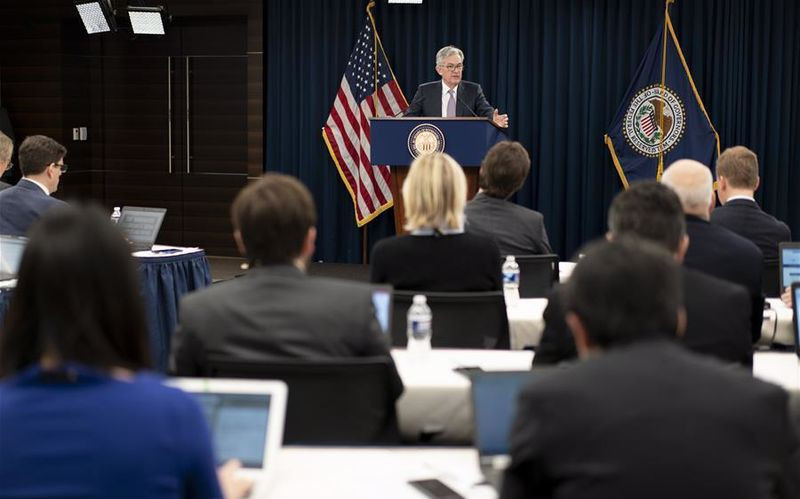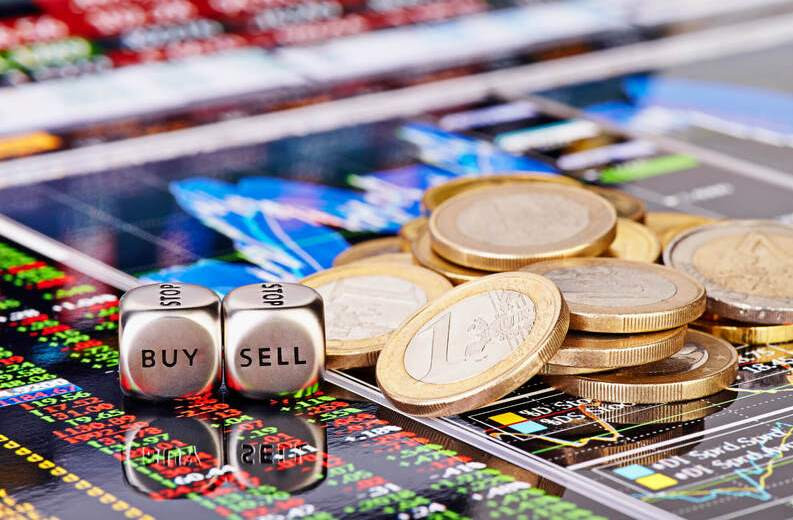
On Tuesday, the EUR/USD pair is drifting in a narrow range as investors are cautious in anticipation of fresh US inflation data.
The day before, the major currency pair dropped by approximately 15 pips from the previous closing level of around 1.0935.
Yesterday, EUR/USD broke its six-day winning streak as the dollar halted its recent decline in anticipation of the CPI report, which could clarify how soon the Fed will begin its monetary easing cycle this year.
Last week, Fed Chair Jerome Powell stated that a rate cut would be appropriate at some point this year.
However, he noted that officials would like to have greater confidence that inflation is sustainably moving towards 2% before taking any action.
Investors estimate the probability of a federal funds rate cut in March at only 3%, in May at 20%, and in June at 57%.
According to the consensus forecast of experts who participated in a recent Reuters survey, the Fed's key rate is expected to remain in the range of 5.25%-5.50% when the regulator holds its next meeting next week.
Meanwhile, two-thirds of respondents said the first rate cut in the US would occur in June.
"We expect progress on inflation in coming months will give the Fed enough confidence to begin a gradual cutting cycle in June," Bank of America specialists reported.
"A more forward-looking Fed might put more weight on low inflation expectations and cut sooner, but this Fed is data dependent and wants to avoid backtracking after it starts," they added.
Some estimates show that the US core consumer price index is expected to remain above the Fed's target level at least until 2026.
The world's largest economy is anticipated to continue growing at 2% or more throughout the year.

The unemployment rate in the US rose from 3.7% to 3.9% in February. At first glance, this indicates that the national labor market is cooling and brings us closer to the Federal Reserve's monetary policy easing.
However, according to some analysts, an increase in the unemployment rate reflects people joining the workforce, which is usually a sign of economic strength.
As analysts at Indeed Hiring Lab stated, "the rise in unemployment appears to have been driven by movements on the periphery," rather than a sharp reduction in jobs.
They said that February's US labor market data showed a possible slowdown in job search pace but still a high degree of participation of workers in the prime demographic group aged 25 to 54 years.
Last month, the US economy added 275,000 jobs, well above the anticipated increase of 200,000.
According to Federal Reserve Board Member Christopher Waller, significant job growth underscores that it is now worth rushing to cut rates.
Given that the US economy is expected to grow by an average of 2.1% this year, which is about 1.8% above the non-inflationary growth rates, there is reason to believe that the Federal Reserve will not be in a hurry to lower rates.
As the American economy continues to exceed expectations, a pressing question for market participants is whether policymakers will stick to their previous forecast of cutting rates.

"It only takes two dots moving higher to shift the median from 75 bps of cuts to 50 bps of cuts. A stronger-than-expected inflation report would increase the risk of an upward revision to the 2024 median dot," Citi strategists stated.
"But given more hawkish Fed officials are already above the median and Powell's desire to preserve consensus, we think the most likely case is the 2024 median stays put signaling 75 bps of cuts this year," they added.
The report to be published on Tuesday is expected to show that core inflation in the US slowed to 0.3% on a monthly basis in February after accelerating by 0.4% in January.
"Were we to get a 0.2%, I think the market will be back on the scent of a possible May first Fed rate cut, and if we were to get a 0.4%, I think the market will be casting some doubt on a cut as early as June. So in that sense, I think it's right to think that there will be a high degree of market sensitivity to anything other than a 0.3% core print," specialists at National Australia Bank reported.
If the core CPI comes in at 0.2%, it will confirm market optimism regarding disinflation and allow traders to increase bets on a decrease in borrowing costs in the US in May. In such a scenario, the dollar risks weakening.
If, however, the core CPI exceeds forecasts, investors will take a defensive stance ahead of the FOMC meeting to be held next week.
In such a case, the greenback will have a chance to recover against its major competitors, including the euro.
Against this background, ING expects the dollar to recover modestly this week. Experts see upside risks for USD in the coming days, with a potential return to the 103.00–103.50 area.

The bank assumes that today's dynamics of the EUR/USD pair will depend on the dollar's reaction to the US consumer price index data. "we still see a return below 1.0900 as more likely than a rally to 1.1000+," ING said.
Since the beginning of March, the euro has risen by approximately 1.2% against its American counterpart, largely because ECB officials have been steadfastly opposing the idea of rate cuts. "We did not discuss cuts for this meeting, but we are just beginning to discuss the dialing back of our restrictive stance," ECB President Christine Lagarde stated last week.
She hinted that the first rate cut is most likely to occur at the ECB's meeting on June 6, by which time wage data for the first quarter in the eurozone will have been published.
Considering that inflation in the currency bloc will return to the ECB's target sooner rather than later, and economic growth in the region is expected to remain significantly below 0.6% this year, it becomes increasingly difficult for the regulator to justify maintaining the current restrictive monetary policy, MUFG analysts noted.
According to a Deutsche Bank forecast, inflation in the euro area will return to 2% by the middle of this year, that is, a year earlier than Frankfurt officials expect. The bank's strategists believe that the European regulator will cut rates by 150 basis points this year.
For the market, the final level of interest rates is more important than the timing of the rate cut mechanism. Traders expect both the Fed and the ECB to lower rates by approximately 90-95 basis points by the end of December.
As Deutsche Bank strategists estimate, the risks for the EUR/USD pair are skewed to the downside this year as the ratio of economic growth to inflation in Europe favors a broader ECB rate cut cycle compared to the Fed.

Last week, the ECB revised down its forecast for eurozone economic growth in 2024 to 0.6%, which is less than half of the expected 1.4% in the US this year, according to the latest Fed forecast.
There has been a "dovish shift in the staff projections," economists at Pantheon Macroeconomics said. "They're basically reaching target, so why not cut now?"
If the Eurozone economy operates significantly below its potential, and the easing of inflationary pressure in the region becomes more evident, this could increase the likelihood of an ECB rate cut in April. In such a case, the single currency will come under pressure.
In the coming months, the euro is likely to weaken slightly against the dollar amid a slowdown in the improvement of the eurozone's external balance and continuing economic disappointments in the region, HSBC experts predict.
Meanwhile, economists at Rabobank believe that the potential for similar policies by the Fed and ECB this year could limit volatility in EUR/USD in the coming months.
According to them, as we move to the second half of the year, the market is likely to pay more attention to the US elections as well as the prospects for growth and interest rate differences until 2025.
A Republican victory could lead to approximately a 5% increase in the dollar's exchange rate, Citi analysts predict.
In their view, Donald Trump's potential new trade policy and the possibility of reducing the tax burden in the US look positive for the American currency.
A scenario in which Joe Biden is re-elected in November's elections, but Congress is divided is neutral for the dollar. In such a case, it will be important who replaces Mitch McConnell as the Senate Majority Leader, Citi economists noted.
In any case, they see the euro as the most vulnerable against the dollar.
The bank sees a high probability that the common European currency will lose value against its American counterpart by the time the US election results are announced.
On Tuesday, the EUR/USD pair is fluctuating within 20 points as investors are awaiting key US inflation data.
The 1.0900 mark acts as the nearest support level on the way to 1.0870 and 1.0840.
The nearest resistance level lies at 1.0970, followed by 1.1000 and 1.1030.





















